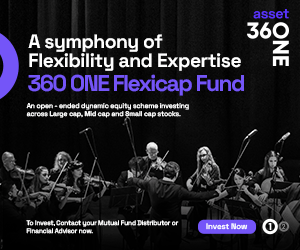An ideal option for fixed income investors: Nippon India ETF Nifty CPSE Bond Plus SDL 2024 Maturity

Nippon Life India Asset Management has launched Nippon India ETF Nifty CPSE Bond Plus SDL – 2024 Maturity. It is an open ended exchange traded fund (ETF) which will invest in constituents of Nifty CPSE Bond Plus SDL Sep 2024 50:50 Index. The New Fund Offer (NFO) which opens on 3rd November 2020 and closes on 9th November 2020 can be an ideal investment option for fixed income investors. The reason being that fixed deposit investors are concerned about two things – 1) Falling FD interest rates (Currently SBI offers around 4.9% for 1 year) and 2) Safety.
Nippon India ETF Nifty CPSE Bond Plus SDL Maturity 2024 tries to address these two issues.
How? 1) The ETF has a bond like structure with fixed maturity (September 2024). The fund will try to hold the bonds in its portfolio till maturity. The coupon returns (interest paid by the bond) will be paid out to investors and 2) The scheme would predominantly invest into AAA rated bonds issued by Government owned entities and State Development Loans (SDLs) which are considered as a quasi-Government Securities. Hence, it is relatively safe as compared to Equity and other aggressive Debt funds.
What are Exchange Traded Funds?
Exchange Traded Funds (ETFs) are financial instruments which invest in a basket of securities (e.g. stocks, bonds, commodities etc) to replicate an index. ETFs are listed on stock exchanges like shares of companies and after the offer period, can be bought or sold in the exchanges. Unlike mutual funds where prices or net asset values (NAVs) at the end of the business day is declared based on market value of the underlying securities, ETF prices are determined by trading activity in the exchange i.e. sellers’ offer prices and buyers’ bid prices. Investors need to have demat and trading accounts to invest and transact in ETFs.
Benefits of ETFs
- The expenses of ETFs are much lower than actively managed mutual fund schemes. For the same level of performance of the underlying fund portfolio, lower costs means higher returns for investors.
- Since ETFs track an index, there is no unsystematic risk in ETFs unlike actively managed funds. ETFs are exposed to purely market risk.
- Like stocks, ETFs can be bought or sold on stock exchanges at real time prices. You can put limit orders in ETFs. Mutual funds on the other hand are bought / sold at end of day NAVs.
Nifty CPSE Bond Plus SDL Sep 2024 50:50 Index
The Nifty CPSE Bond Plus SDL Sep 2024 50:50 Index seeks to measure the performance of portfolio comprising of the following:-
- 50% of the portfolio: AAA rated bonds issued by entities owned by Government of India (CPSEs, PFIs)
- 50% of the portfolio: State Development Loans
- All the securities in the portfolio will mature from 1st October 2023 to 24th September 2024.
The index will use buy and hold strategy i.e. the securities comprising the index at the time of launch will be held till they mature. The index will mature on 24th September 2024.
Security Selection of the Index
- CPSE bond portion: Only issuers having AAA rating will be considered. Top 10 issuers of bonds maturing between 1st October 2023 to 24th September 2024 will be selected based on liquidity scores. Liquidity scores are calculated based on trading value (80% weight), number of days traded (10% weight) and number of trades (10% weight) of all the bonds issued by the issuer between 1st October 2019 to 30th September 2020. For each issuer, the most liquid bond maturing between 1st October 2023 to 24th September 2024 will be selected – single security per issuer. Each bond will be given 5% weight in the index, totalling to 50% for 10 bonds.
- SDL portion: Top 5 states / Union Territory (UT) are selected with a cut-off date as of 30th September 2020 based on their outstanding issuance amount maturing between October 01, 2023 to September 30, 2024. The 5 states are Andhra Pradesh, West Bengal, Maharashtra, Karnataka and Tamil Nadu. Most recently issued SDL of each state maturing between 1st October 2023 to 24th September 2024 will be included in the index. Each bond will be given 10% weight in the index, totalling to 50% for 5 states.
Index Rebalancing
Index will be reviewed at the end of each calendar quarter and rebalancing will be done in case of breach of 15% in weight of any issuer or in case of downgrade below AAA or disinvestment leading to change in the current status of the index constituent.
Benefits of Nippon India ETF Nifty CPSE Bond Plus SDL
- High Safety: Credit risk is a major concern for investors in debt mutual funds. Since the fund will invest AAA bonds issued by the Government owned enterprises, the credit quality of underlying securities will be very high. Further the ETF will invest 50% of the portfolio in State Development Loans; State Governments have quasi Sovereign status. So the overall credit quality of the ETF will be very high.
- Stability of returns: The ETF has a bond like structure with fixed maturity (September 2024). The fund will try to hold the bonds in its portfolio till maturity. The coupon returns (interest paid by the bond) will be paid out to investors. Since the fund will endeavour to hold the bonds till maturity, investors will have visibility into returns. As and when bonds in the ETFs mature, the maturity proceeds will be parked in Treasury Bills and Tri-party Repos (no credit risk) and will be paid out to investors on maturity of the ETF / Index.
- Good Liquidity: Liquidity is provided to investors in two ways in ETFs – trading through exchanges or directly through AMCs. Retail investors mostly use the exchange for ETF transactions. Market makers are appointed by AMCs to ensure liquidity and fair price on the exchanges. In addition to the exchange route, investors can also transact directly with AMC in multiples of the lot size.
- Low Cost: The cost of this product will be much lower than actively managed debt mutual funds. Lower cost also means higher returns.
- Tax Advantage: The ETF will enjoy taxation advantage over traditional fixed income investments like bank fixed deposits and several Government (Post Office) Small Savings Schemes. Interest income from most traditional fixed income investment options are taxed as per the income tax rate of the investor. While short term capital gains (investment held for less than 3 years) from Nippon India ETF Nifty CPSE Bond Plus SDL will be taxed as per the income tax slab, long term capital gains (investment held for more than 3 years) from the ETF will be taxed at 20% after allowing for indexation benefits. For investors in the higher tax brackets with investment tenures of more than 3 years, the ETF will be much more tax efficient compared to the traditional fixed income schemes.
Summary
Passive investing (through ETFs) is becoming increasingly popular all over the world. Investors normally associate ETFs with equity investing, but fixed income investing through the ETF route is also becoming popular globally. Nippon India ETF Nifty CPSE Bond Plus SDL is one of pioneers of fixed income passive product for retail investors in India. It is suitable for institutional, HNI and retail investors. With a relatively small investment amount you can get exposure to a basket of high credit quality debt securities of Government owned enterprises and State Governments through this ETF. You can get stable, tax efficient (for 3 years plus tenures) returns and at the same time, good liquidity and transparency in this investment.Investors should consult with their financial advisors or contact Edelweiss Mutual Funds to know more about this ETF and if it is suitable for their financial needs.
Mutual Fund Investments are subject to market risk, read all scheme related documents carefully.
Queries
-
What is the benefit of mutual fund STP
Aug 29, 2019
-
How much to invest to meet target amount of Rs 2 Crores
Aug 26, 2019
-
Can I achieve my financial goals with my current mutual fund investments
Aug 24, 2019
-
Can you tell me return of various indices
Aug 19, 2019
-
What would be the post tax return on different investments
Aug 18, 2019
-
Which Principal Mutual Fund scheme will be suitable for my retirement corpus
Aug 16, 2019
-
What is the minimum holding period for availing NCD interest
Aug 4, 2019
Top Performing Mutual Funds
Recommended Reading
Fund News
-
Jio BlackRock Mutual Fund launches Jio BlackRock Short Duration Fund
Jan 8, 2026 by Advisorkhoj Team
-
Jio BlackRock Mutual Fund launches Jio BlackRock Low Duration Fund
Jan 8, 2026 by Advisorkhoj Team
-
Groww Mutual Fund launches Groww Small Cap Fund
Jan 8, 2026 by Advisorkhoj Team
-
Bank of India Mutual Fund launches Bank of India Banking and Financial Services Fund
Jan 8, 2026 by Advisorkhoj Team
-
Sundaram Mutual Fund launches Sundaram Income Plus Arbitrage Active FoF
Jan 5, 2026 by Advisorkhoj Team














